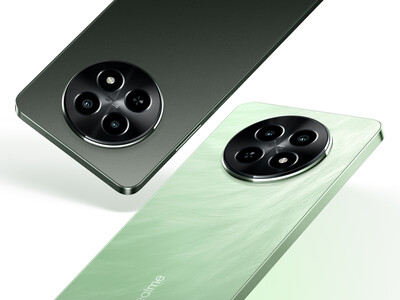Hirdetés
-


Gray Zone Warfare - Napokon belül kiderül, hogy mikor indul a korai hozzáférés
gp A jelentések szerint a zárt tesztek sikeresek voltak, hamarosan még többen belevethetik magukat a programba.
-


Olcsó 5G-s ajánlatot nyújt a Realme Indiának
ma Megérkezett a Realme C65 5G, az első készülék a MediaTek Dimensity 6300-zal.
-


Ülésezik a hardveregylet
ph Az irodai készülékek és monitorok társaságát egy ház, egy egér és egy DAC egészíti ki.
Új hozzászólás Aktív témák
-

P.H.
senior tag
[link]
Itt rövid PH!/Chip cikk a memóriavédelmi eljárásokról. Főleg a közepe érdekes, a memóriahibák gyakoriságáról. Teljesen életszerű, hogy mivel az utóbbi időben a több GB memória kezd megszokottá válni az otthoni gépekben is, nagyon megnövekedtek az átviteli sebességek, ezáltal a mozgatott adatmennyiség is (amit ki lehet használni, azt kis is használják a programok) elérte azt a szintet, amit pár éve egy-egy szerver hozott. Ezekkel együtt azonos hibaaránynál meredeken ugrana a hibák száma. Erre még rájön a tuning is. Szerintem is muszáj lesz lassan otthoni felhasználásra is behozni egyes technológiákat (mint az megannyi mással is megtörtént eddig).Arguing on the Internet is like running in the Special Olympics. Even if you win, you are still ... ˙˙˙ Real Eyes Realize Real Lies ˙˙˙
-

P.H.
senior tag
válasz
 SystemRoot
#76
üzenetére
SystemRoot
#76
üzenetére
Mindenre van scrubber, ami ECC-védett.
A scrubber is associated with the data cache in DC, the L2 cache tag array in bus unit, and the DRAM in the Northbridge. A scrubber is a hardware widget that periodically wakes up during idle cache cycles and inspects the next line of the array with which it is associated to look for errors. If it finds a single bit ECC error, the scrubber corrects the error and prevents a regular access from encountering the same error.
(Ahogy fehérholló is leírta.)Ha mindent 40 ns-en hagysz, akkor az látványos teljesítménycsökkentést okoz, én DRAM-ra 41 us-t, L1-re és L2-re 320 us-t állítottam be, ez már szinte mérhetetlen mértékben lassítja csak a rendszert. (A Sandra 'Memory Bandwidth' tesztje mutatja talán a legjobban az egyes beállítások hatásait.)
DRAM SCRUB Redirect:
In addition to sequential DRAM scrubbing, the DRAM scrubber has a redirect mode for scrubbing DRAM locations accessed during normal operation. When a DRAM read is generated by any agent other than the DRAM scrubber, correctable ECC errors are corrected as the data is passed to the requestor, but the data in DRAM is not corrected if redirect scrubbing mode is disabled. In scrubber redirect mode, correctable errors detected during normal DRAM read accesses redirect the scrubber to the location of the error. After the scrubber corrects the location in DRAM, it resumes scrubbing from where it left off.Tehát ha ECC által javítható hibát talál, akkor a célba helyes érték fog érni, és ha a redirect engedélyezett, akkor a memóriába is, azonnal visszaírja a javított értéket, egyébként nem.
ECC Chipkill (vagy 4-bit ECC):
Itt egy nagyon rövid leírás az Opteron-ok chipkill megvalósításáról.
Egy személyes példa: registered ECC DDR2-400 Micron D9 chip-es RAM-okat használok 667 MHz-en, 4-4-4-12-n. Egyszer csak úgy hirtelen gondolatra feltettem 800-ra, Chipkill-lel, 5-5-5-15 időzítésekkel. Majdnem három órán keresztül használtam a gépet, Everest és Sandra szint összes tesztje lefutott, bár egyre jobban látszott, hogy a memóriateljesítmény nagyon visszaesett, a sok hibának/javításnak/újraolvasásnak köszönhetően. Végül a 'Cache and Memory' teszt közben újraindult a gép. Chipkill nélkül, sima ECC-vel 800-on 6-6-6-16 (a legnagyobb megadható) értékekkel sem jut el a gép a BIOS-ig sem, RAM-hibára hivatkozva.
Azóta 667-en be van állítva a chipkill, nem okoz semmilyen lassulást, ha alapvetően nem hibázik a RAM.[ Szerkesztve ]
Arguing on the Internet is like running in the Special Olympics. Even if you win, you are still ... ˙˙˙ Real Eyes Realize Real Lies ˙˙˙








